If Mortal Kombat had followed its original trajectory, it would exist in a paltry 200 arcade cabinets, collecting dust in hipster arcade bars scattered across the Midwest. It was intended to be a small Street Fighter II clone with Jean-Claude Van Damme as its major selling point. But Mortal Kombat quickly became larger than life, thanks to a small group of friends who let their imaginations run wild, a marketing campaign of epic proportions, and of course, a couple spine-rips and nut punches that landed it in the Supreme Court.
And now… FIGHT!
Midway Games was fresh off merging with Williams, a pinball machine company, when Capcom released Street Fighter II, helping make fighting games mainstream in the process. In a small studio on the southwest side of Chicago, Midway began experimenting with digitized photographs in order to make a fighting game of its own. The developer had no idea what would come next.
Amanda Farough, Managing Editor of Game Daily: Midway, as the developer that we came to know in the 1990s, wasn’t the developer that it originally started out as. By the early 1990s, it was still making pinball machines, and arcade cabinets like bowling games and shoot-out games.
Chris Alaimo, Gaming Historian: By 1992 or 1993, the gaming industry overall had been undergoing a slow transition out of the arcades and into the homes. You weren’t generally going to go out of your way to seek out arcade games when you had the NES at home.
Farough: The industry was still struggling to get back on its feet after a big crash in the 1980s, where lots of people got really excited about video games and scrambled to make video games, but the market couldn’t support this glut of games. Developers everywhere had to close up shop. So with the release of the Super Nintendo, things started to become a big problem for Midway, because they weren’t really sure what they were.
Alaimo: If you look at the games that Midway was releasing in the arcades in the late 1980s, aside from their pinball releases, you have a bunch of arcade cabinets that, while not totally unheard of, are certainly not A-list titles. This was kind of a result of everything happening in the industry around them.
Mike Haseloff, Mortal Kombat Online Webmaster: The definitive standard for modern fighting games had long been established in Street Fighter II. There was a wall of Street Fighter II cabinets in the arcade well before Mortal Kombat showed up. So Mortal Kombat should really be thought of as an underdog story, but a four-man development team with enough creative spark walked like a giant.
Mortal Kombat’s co-creator and head of Midway, Ed Boon, wanted a “grittier version of Street Fighter II” that would be focused on 1990s movie star Jean-Claude Van Damme. But Van Damme declined fellow co-creator John Tobias’ initial pitch for the mystical kung-fu game we know today. So the company was forced to pivot. With the help of Tobias’ childhood friends, the developers leaned into the kung fu, magical realism storylines that became the selling point of Mortal Kombat.
Daniel Pesina, the actor who portrayed Johnny Cage, Sub-Zero, Scorpion and Reptile: Before he worked for Midway, John Tobias and I used to do everything together. I’d been doing martial arts my whole life, so he called me up and he’s like, “Hey, I have an idea for a fighting game, and I wanted to know if you can help me out to pitch an idea to my boss Ed Boon.” At the time, we thought it was going to be a small project, maybe 200 arcade cabinets.
Rich Divizio, the actor who portrayed Kano: You’ll hear it different ways. Daniel will say, “Well, Tobias called us,” or he’ll say, “Tobias called me.” But I’m like, no, John called me.
Pesina: So after John called me we got my brother Carlos [who portrayed Raiden] and Rich and snuck into the studio at like 10:30 at night to help John put together a pitch to Midway. We videotaped some moves, and talked about initial ideas and characters to add to his story — like, originally John had Japanese ninjas, but every movie in the 1980s and 1990s had Japanese ninjas, so I suggested Chinese ninjas called “The Lin Kuei.”
But when we pitched it, they said no. Everyone at Midway rejected it. Ed said our idea would never work but liked the idea of a fighting game, so they cancelled ours and pursued a mainstream game with Jean-Claude Van Damme because it would make more money. I was pissed, because I gave a bunch of great kung fu ideas, and they were now going to give them all to Jean-Claude Van Damme.
Divizio: Van Damme didn’t wanna do this game, probably because he was already doing, like, Universal Soldier, and he wasn’t going to come down to do a video game.
Pesina: When that failed, John, through Rich’s nagging, asked if we could go back to the original idea.
Divizio: I think John was kinda like, “Shit, I gotta scramble to find some people to do martial arts for this game.”
Liz Malecki, the actor who portrayed Sonya Blade: They were teaching martial arts at the Lake Shore Athletic Club, and I was teaching the fitness classes. Daniel came up to me and asked me if I wanted to be a part of a video game. I wasn’t a video game player, so I had no idea of what I was getting into.
Divizio: We were all lifelong friends in our 20s, working at a gym part-time and doing creative stuff the other part.
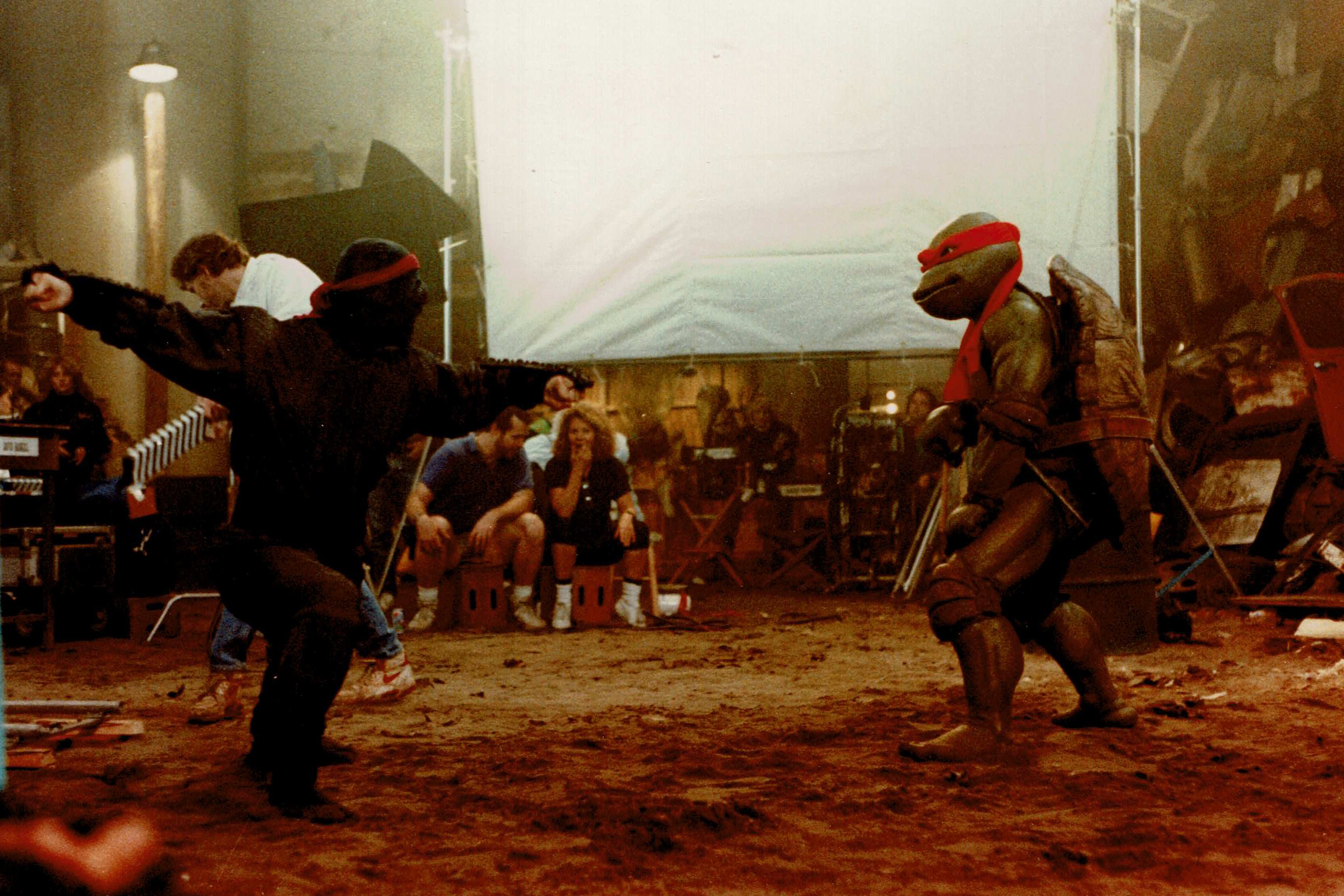
Pesina: We started filming and when you watch us work, there’s some energy. Tony [Marquez] coined the phrase, “personality in the pixels.” Some people resonate on film, whether it’s still or moving. There’s a certain chemistry.
See you at #Kombatkon2017 pic.twitter.com/oJyAI3qlnV
— Daniel Pesina (@masterpesina) September 3, 2017
Farough: Using real actors was something you hadn’t really seen in an arcade-style game yet — they weren’t this high fidelity, especially with fighting games.
Pesina: We experimented with every martial art move for about three days, eight hours a day, filming and trying to figure it out. Any sort of sophisticated video game animation technology wasn’t around. What you see is videotaped footage of us doing the actual moves.
Imagine doing this over & over #yougotcaged #fight #stealmykungfu pic.twitter.com/OXHrAXETP6
— Daniel Pesina (@masterpesina) April 19, 2016
Divizio: Where we filmed was nowhere near professional. It was like a junk closet, with a makeshift backdrop, makeshift lights and John had a camera — I think it was his dad’s — a HI-8 video, about the best quality at the time.
Liz dealing with the barbaric working conditions #fight pic.twitter.com/TMbJwnUXRE
— Daniel Pesina (@masterpesina) December 17, 2015
Malecki: I feel like it might have even been just a hallway at first, because the owner of Midway or CEO or whatever he was, didn’t think it was going to work.
Pesina: We didn’t even have mats for me to fall or do flips on at first, because again, it was going to be a small game — and we weren’t really going to get paid a lot of money for it. It was just boom, boom, do this, do that, change this, change that. I think I shot enough footage for like five different ninjas, including [minigame] “Test Your Might,” which was the “quarter eater,” as John explained.
I got tired of jump kicking and noticed some stairs & asked if they could just blank them out. pic.twitter.com/FwUMlGN7yy
— Daniel Pesina (@masterpesina) January 14, 2016
Lo-fi or not, production of Mortal Kombat was officially underway. John Tobias had an outline of ideas, characters and levels sketched out, even though the name — eventually Mortal Kombat, rather than the suggested Ultimate Kumite or Dragon Attack, thanks to pinball designer Steve Ritchie spelling it with a “K” on an office whiteboard to avoid trademark infringement — had yet to be decided. Thousands of details, from finishing moves to catchphrases to weapons, were solidified during the five days they filmed.
TBT working with Rich, all other Kanos are modeled after him. Water Marked , peeps add theirs without my permission #fatality pic.twitter.com/vhPxvyhZLe
— Daniel Pesina (@masterpesina) January 5, 2017
Divizio: In our makeshift broom closet, John and Ed had this software that would grab 30 frames of video, then use what frames they wanted. I would stand there in position like Bruce Lee, and try to do moves that John could loop. Then the video gets cut down from 30 frames to 8 frames, to save on space.
Malecki: Daniel would show me which move they wanted to do and I’d just copy it. We had a silver pole with a red tape at eye level and waist level, so I do a low punch or a low kick at the lower red tape and the high punch and the high kick at the higher red tape. As long as all our individual moves were aimed at those spots, they were going to end up lining up with each other, and basically hitting and kicking each other in the game.
TBT creating the franchise #yougotcaged #stealmykungfu pic.twitter.com/5orQfFlJrl
— Daniel Pesina (@masterpesina) July 21, 2016
Divizio: Then they’d just tie the punch button to the animation that was filmed of me punching, and so on and so forth. That was all left up to Ed, the master programmer, and I’m sure it was a friggin’ nightmare, where he had to be like, “What happens if you’re walking right but you wanna duck at the same time?” But it was a good time! There was no corporate crap about it at all. We’d bullshit, talk, laugh, come up with shit, then head back to the little makeshift closet room where we filmed.
Chiarelli: Over bottomless refills of black coffee at the Mt. Pindos Restaurant on Pulaski Avenue, we’d endlessly banter and bicker about our shared obsessions: Everything from the art of Ernst Fuchs, Syd Mead and H.R. Giger, Blade Runner, Bernard Herrmann’s movie scores, ethnic folklore and ancient mythology, girls (of course!), the poems of Guillaume Apollinaire, the writings of William S. Burroughs and H.P. Lovecraft, and beyond.
Pesina: We were all really geeky, and for us, it quickly became more about the fantasy stuff, because there wasn’t anything really out there like that.
Farough: Mortal Kombat was all about magic and violence through that magic. Sub-Zero throwing his crazy ice blast and punching them into oblivion, where he crumbles them into like, little meaty bits? For the time, that was crazy. They were looking to do something shocking and crazy and completely bonkers while also building a really solid fighting game to compete with Street Fighter II.
Jeff Peters, Project Director of Mortal Kombat I for Sculptured Software: Mortal Kombat proved to be the first time where a head-to-head fighter like this went all in for the characters, backgrounds and story.
Haseloff: The game delivered a lot through text and illustration, which elevated the experience. It gave you something to talk about away from the game. Fans became enamored with the characters and arenas, and bought into the mythology.
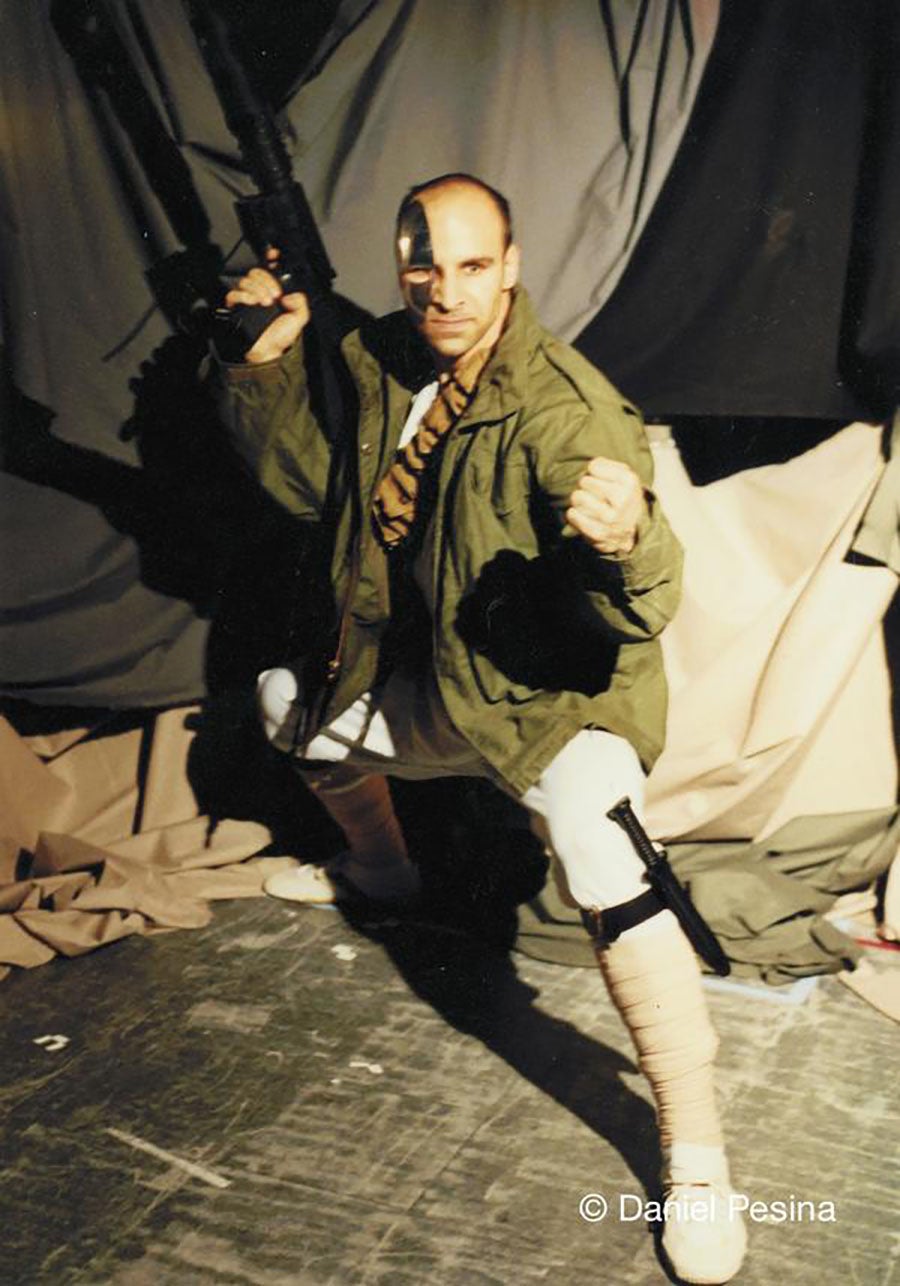
Pesina: We had nicknames for the characters during filming, but most of the names were made official afterward. Still, we intentionally made every character different, with a different personality and a different fighting style, which isn’t the case on the current games — sure, they have different special moves, but their general moves all look the same.
Divizio: When it got down to the rest of the characters doing things that were special, like something that made each of them unique, we would all collaborate on that kind of thing.
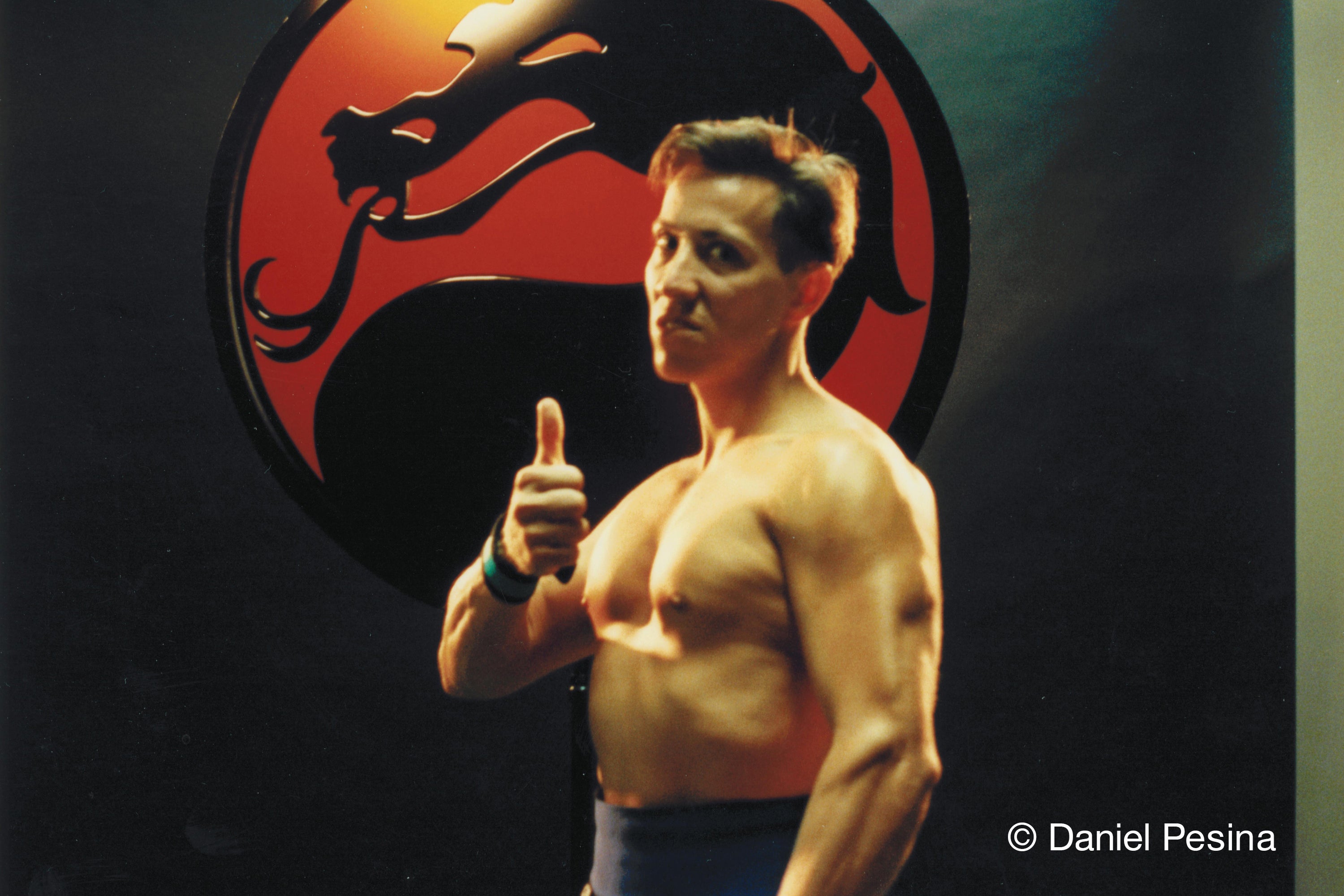
Pesina: Johnny Cage was the first character we shot, so he’s like the father of Mortal Kombat. When we were shooting him, we did every movement we could think of to try to get some kind of idea of what path to take during the game.
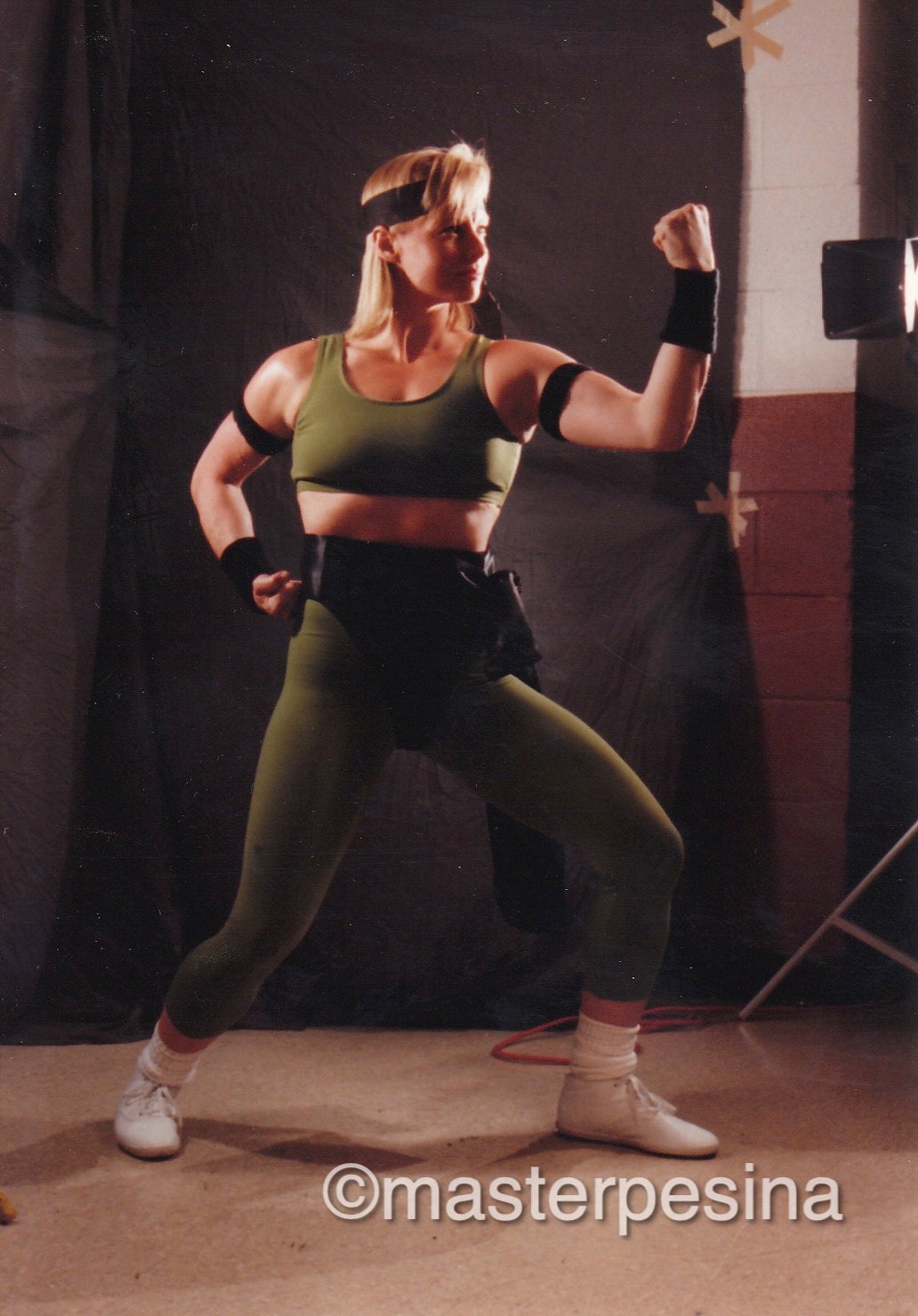
Malecki: Sonya was supposed to be special forces and a martial artist, so I decided to pull in the army green tights. And since I was into aerobics, I gave her the thong that was so popular back then for women to wear in exercise classes.
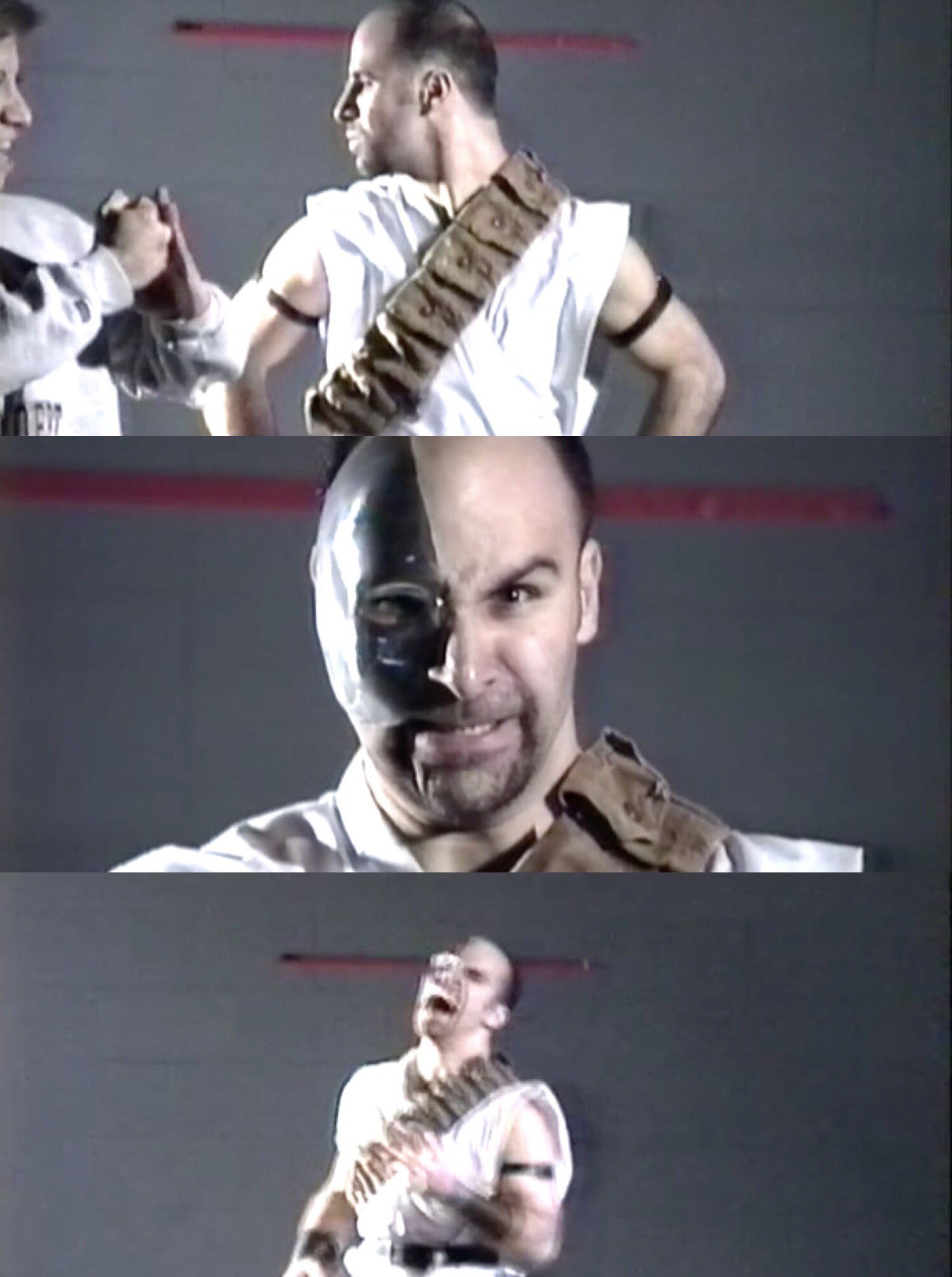
Divizio: We were in full makeup and everything. As far as the Kano mask goes, it was just a phantom of the opera mask that we got at a Halloween store and glued to my face using spirit gum. Eventually the gum stopped working so we used regular glue, which tore off my face.
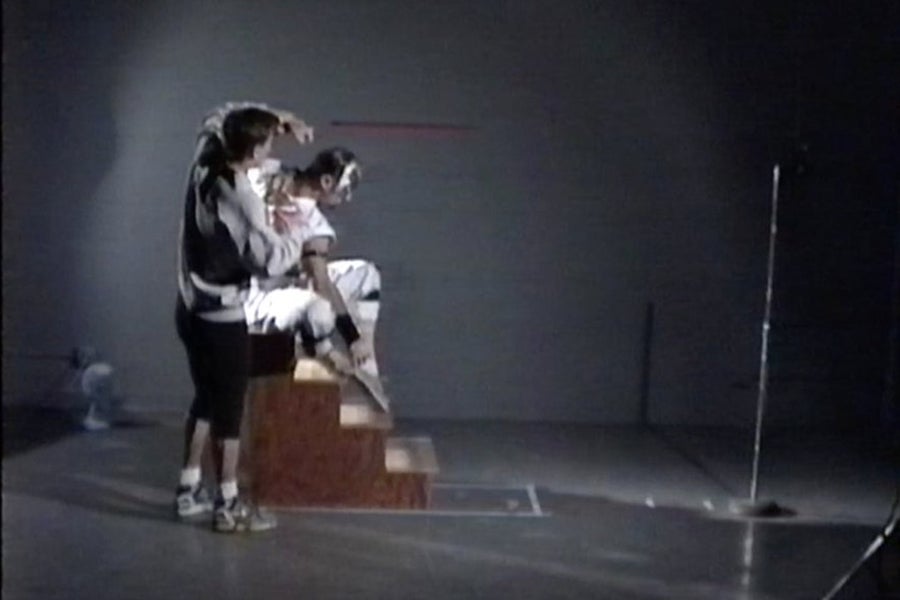
Pesina: People think Johnny Cage is based on Van Damme because that’s what the game was supposed to be, but he was really modeled after Danny Rand, AKA Iron Fist. Same thing with Jax, who is actually modeled after Power Man. So we took all these Marvel comic book ideas, we put them into the game, and now it’s owned by Warner Brothers, who owns DC. So we goof around and say that this was really the first crossover, because we were inspired by Marvel comic books, but the game’s owned by DC.
Divizio: Danny’s original ninja was Scorpion, who was yellow, that was the first one. Then he got tinted to green and grey, and blue. Just a color palette swap.
TBT Color swap Original SubZero #SubZeroLives pic.twitter.com/XLDxCWcsv2
— Daniel Pesina (@masterpesina) April 13, 2017
Pesina: John had the idea that we could have even more ninjas by doing a color swap to save time. But because we’re all friends and we used to rib each other, my brother Carlos was like, “John, that’s just lazy, get off your ass and let’s film all the characters,” because originally we had a bunch of characters that we wanted to put in the game, but couldn’t because of time constraints.
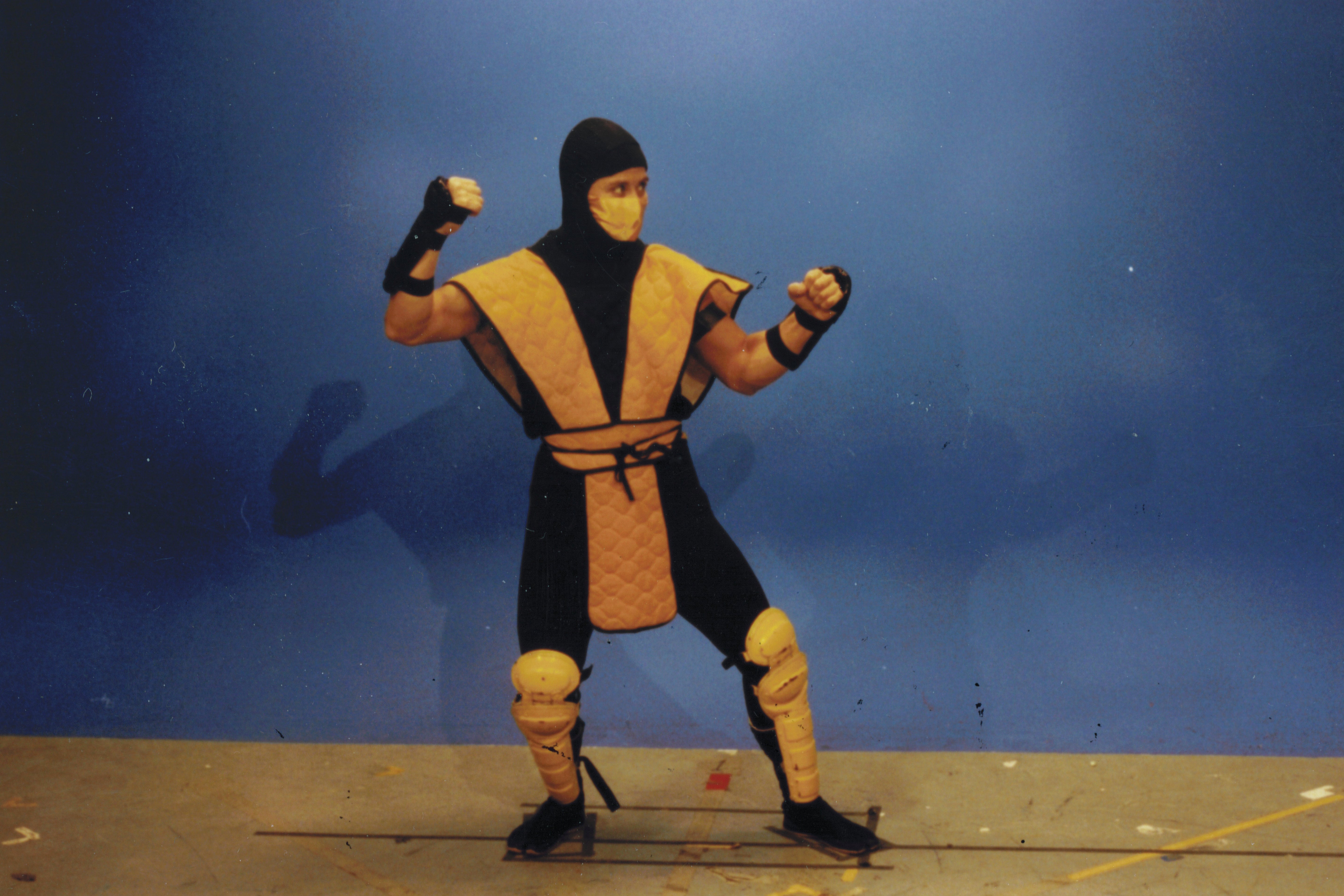
John was already working nights and weekends on this thing because he was the only artist, besides the background artist. So he was like, “You know what, I’m going to make up a story where the ninjas are brothers and they’re going to fight each other.”
Then I was like, “Nah, brothers would never fight.” And John goes, “Well, how about one brother wants to lead the clan, so he kills the father who is their teacher?” The whole room was just like, “Oh my God, that’s a great story.” I know later on for the movie they changed that stuff, but originally they’re brothers, and it’s brothers as a joke toward my brother and I for being smart asses with John.
TBT the moment I ripped my pants because there was no room to do high kicks in them #fatality pic.twitter.com/1pij5gcS5h
— Daniel Pesina (@masterpesina) February 16, 2017
Divizio: Daniel and I kept asking John if they were going to have weapons in the game.
Pesina: “GET OVER HERE!” was Rich Divizio’s idea. One of the guys came up with the idea to take a lasso and twist it over my head, throw it and then pull somebody over. I was just like, “No, I’m not going to do the Wonder Woman thing.” Being a martial artist, I had a rope dart, which is used to pull horsemen off their cavalry. Rich was like, “Oh, that’d be cool if you spear him in the chest and then you pull them over, and you’re like, ‘GET OVER HERE!’ and then you uppercut them.”
Divizio: That’s all I fuckin’ said. I said, “You pull ‘em back and say ‘GET OVER HERE!’ and then you uppercut ’em as soon as you pull them close.” Everyone was like “YEAH YEAH that’ll be cool!” Now I’ll tell you this, there’s behind-the-scenes footage on YouTube when I say the whole “Get over here” thing. Ed wasn’t there, but you hear Tobias saying, “Hey Rich, you said…” and the video cuts right there and it jumps to a whole ‘nother section. And I’m like, “Oh, these motherfuckers cut it!” They don’t want it said who actually came up with that. I’m not trying to take anything away from anybody, I’m just saying that I know I made that shit up.
Behind the scenes filming Scorpio; hear the creation of the rope dart, and Rich’s “GET OVER HERE!” get cut.
Pesina: We were just goofing around having fun. People from other departments would even come by to watch us work because it was so entertaining.
Divizio: A guy I went to Columbia College with, Curt Chiarelli, he’s the one who sculpted Goro for John.
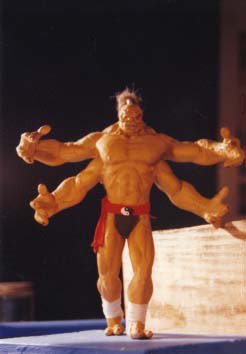
Chiarelli: There are no analogues in the higher vertebrate orders for a four-armed bipedal hominid that we could cue off of, simply because it doesn’t exist in reality. This biological truth renders the issue of an extra set of pectoralis muscles a moot point. In my experience and opinion, the first cardinal rule of fantasy character design is maintaining the illusion of anatomical and physiological functionality within the framework of a consistent, aesthetic integrity; and the second is that the simpler and cleaner the forms, the more iconic the creature will be.
I suggested some minor revisions, like a decrease in the diameter of Goro’s biceps to facilitate easier animation of the arms, as well as make the number of digits on his hands and feet uniform, as is the pattern in all terrestrial vertebrates.
Divizio: Then John made a little blue screen background and animated the 12-inch model by hand, like the old fashioned Star Wars AT-AT walkers on the snow. Move each and every little thing, take a picture, move it, take a picture, move it.
Haseloff: There’s supposedly evidence of Goro falling to his knees and turning to crumbling stone, which is an exciting unused piece. It would’ve been a far more ceremonial death for a character really built up in the attract screen and the game’s mythology.
Besides the in-depth mythological storylines, what ultimately set Mortal Kombat apart from every other fighting game was the ability to kill your comatose opponent. At the time, other games ended fighting matches with the opponent “knocked out” but still alive, but Mortal Kombat challenged players to rip their opponent’s spine out and leave him in a puddle of bloody flesh — to FINISH HIM, if you will. Ed Boon took a bet on over-the-top violence and was mightily rewarded: As complex as they were violent, the finishing moves became another part of the game’s dark mythology and further helped it spread. People flooded arcades not only to see the action, but to see the fatalities performed by those who had mastered the game.
Alaimo: Part of the allure of Mortal Kombat, arguably, was that it had over-the-top blood and gore, punctuated by the game’s signature feature, the “finishing move,” in which a ridiculously-violent coup de grace could be performed on the vanquished player. Half the reason that people watched others play the game in the arcade was to watch skilled players pull off the move, which required unpublished knowledge of advanced input sequences.
Pesina: We started out with there being a little bit of blood and the characters would be battle worn, meaning over time they’d get bruises, their clothes would get torn and things like that. But I think that just because of time and technology it didn’t come out that way. It kind of came out more like what you see today.
Divizio: Ed Boon was sick and tired of the fighting games where, when you beat someone in like Pit-Fighter and Street Fighter, it would just end. I guess he thought it was a little too clean.
Pesina: So we were going to have beat-down moves, where the opponent was going to literally have very little life left and you could just wail on ‘em.
Divizio: But then Ed was like, “You know what? Something should happen!” And Ed coined this, he’s like, “Somehow you gotta finish this guy off!” And right there in the room, it was like, Ding! “Oh! That’s a cool thing to say! FINISH HIM!” That’s how shit gets created. When you have a lot of creative people in a room, without the corporate shit breathing down your neck, you could come up with shit on the fly, that’s the best way to do it. Fuck the suits.
Special beat down move that did not make it into the game Kano Wins #yougotcaged #stealmykungfu pic.twitter.com/h5VpyFKqoJ
— Daniel Pesina (@masterpesina) March 16, 2016
Haseloff: My favorite fatalities have always been the ones that are informed by the character, or just scratch a basic kung fu movie itch. A good spine rip is hard to pass up, but Scorpion’s hellfire breath is pretty classic.
Pesina: Because of our frigging martial arts egos, each character we shot wanted to be better than the last.
TBT You Got Caged pic.twitter.com/INj9paYdNi
— Daniel Pesina (@masterpesina) November 19, 2015
Johnny Cage was first, and my original idea for his fatality was to punch the guy so hard that his head goes flying off. But then John was like, because Van Damme had said no, “You want to poke a little bit of fun at Van Damme?” And I was like, “Uh, what do you got in mind?” He was like, “You can do the splits, and we’ll have him punch people in the nuts.” So I did that.
Then Rich’s was the next to be filmed, and he wanted to outdo mine. What he originally came up with was to rip out your heart and take a bite of it, then put it up in the air.
Divizio: I was a big fan of the Indiana Jones movies, and I always thought that scene during the ritual where the guy pulls out the other guy’s heart was kinda cool.
Pesina: But John was like, uh, no, we can’t do that.
Divizio: So I was like, “Why don’t I just stick my hand in there and rip the heart out, and then I’ll hold it up and it’ll be beating.” And everyone in the room’s like, “YEAH YEAH YEAH, that’ll be cool!” So then John takes video of me reaching in, and adds a beating heart to it on the computer, and we’re all like, “Yeah, that’s fuckin’ cool!”
Malecki: Everything was in a discussion sort of way, we’d just talk about, “What about this, what about this, what about that?”
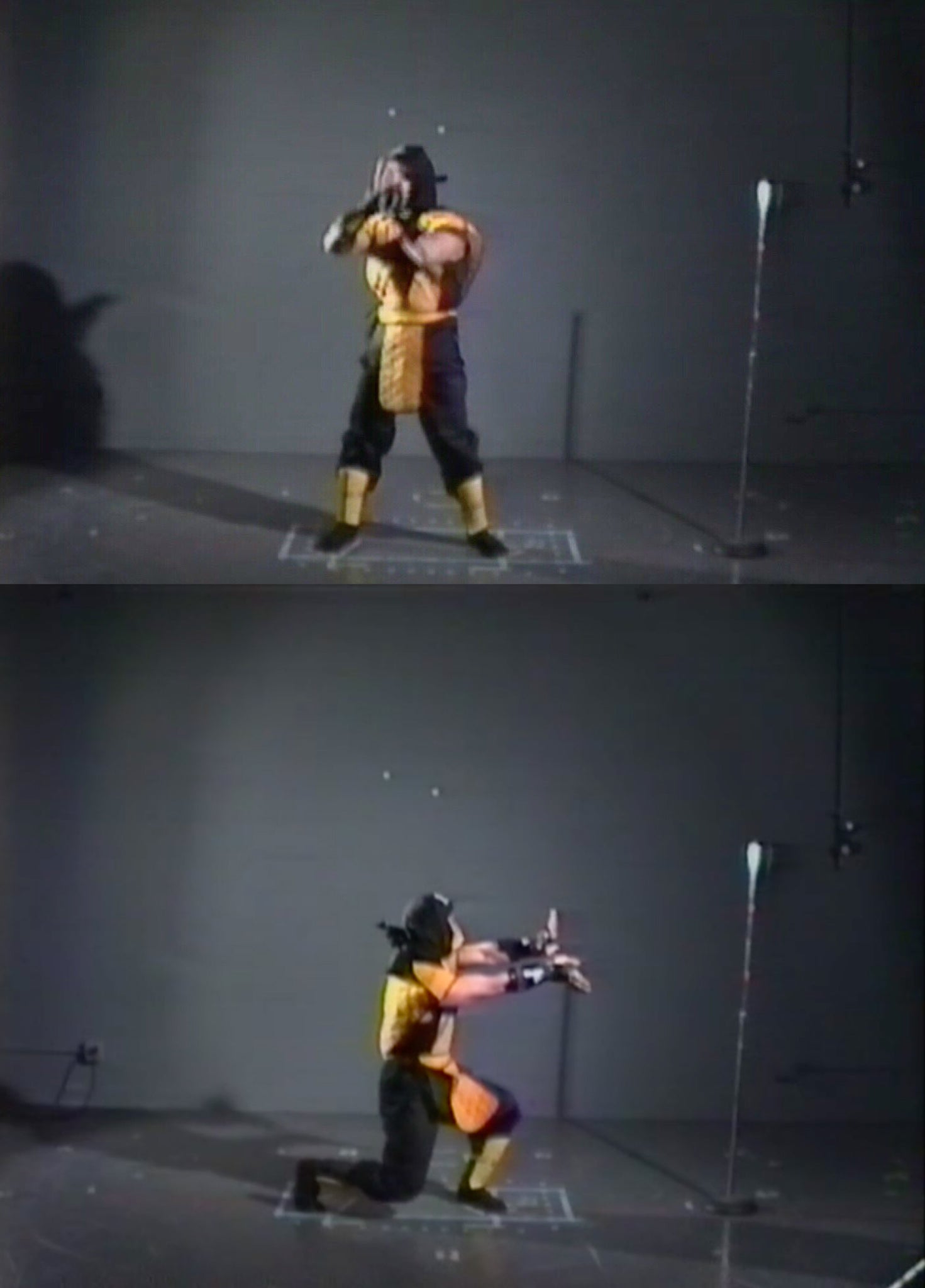
Divizio: When Danny was filming Scorpion, they were talking about how he takes his mask and he pulls it down and breathes fire. I always liked skeletons because of the Killer Instinct guy Spinal, so I go, “Why doesn’t he just take the whole mask off, but when he takes it off it’s not a real head underneath, it’s a skull, like a skeleton. And then he breathes fire and burns the guy to a crisp.” Everyone thought that was cool, so we went with it.
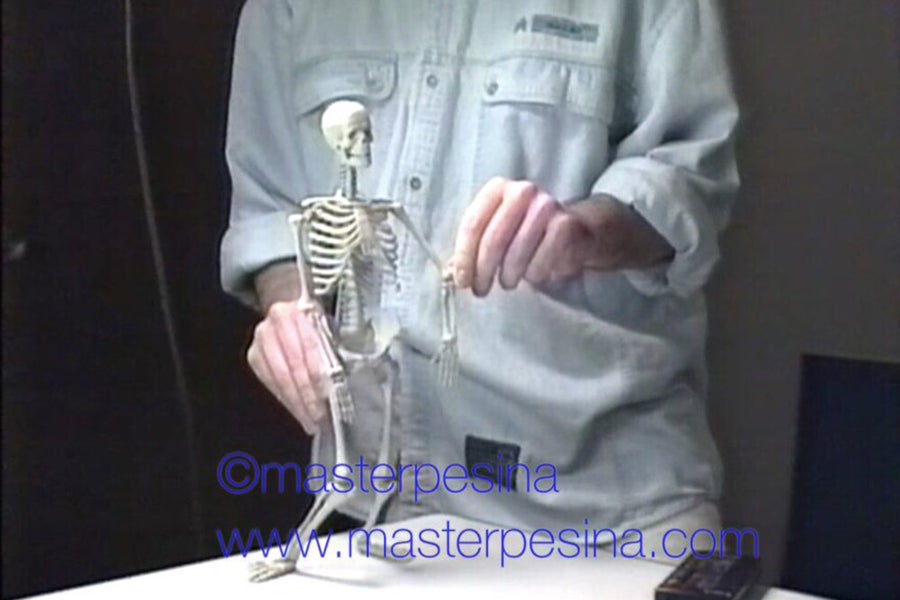
Pesina: For Reptile, I remembered an episode of The Amazing Spider-Man where Spider-Man fights a reptile who spits acid, so I pitched that as his fatality.
Malecki: For Sonya, we were just talking about what cool moves we could think of, and goofing around, and I was doing a handstand where I would bend at the knee, then flop over, straighten up and come back upright. And John goes, “Oh! That’s good! Sonya will throw somebody with her leg.” And then Daniel came up with the fatality move where she blows the kiss and the opponent blows up and turns into ashes.
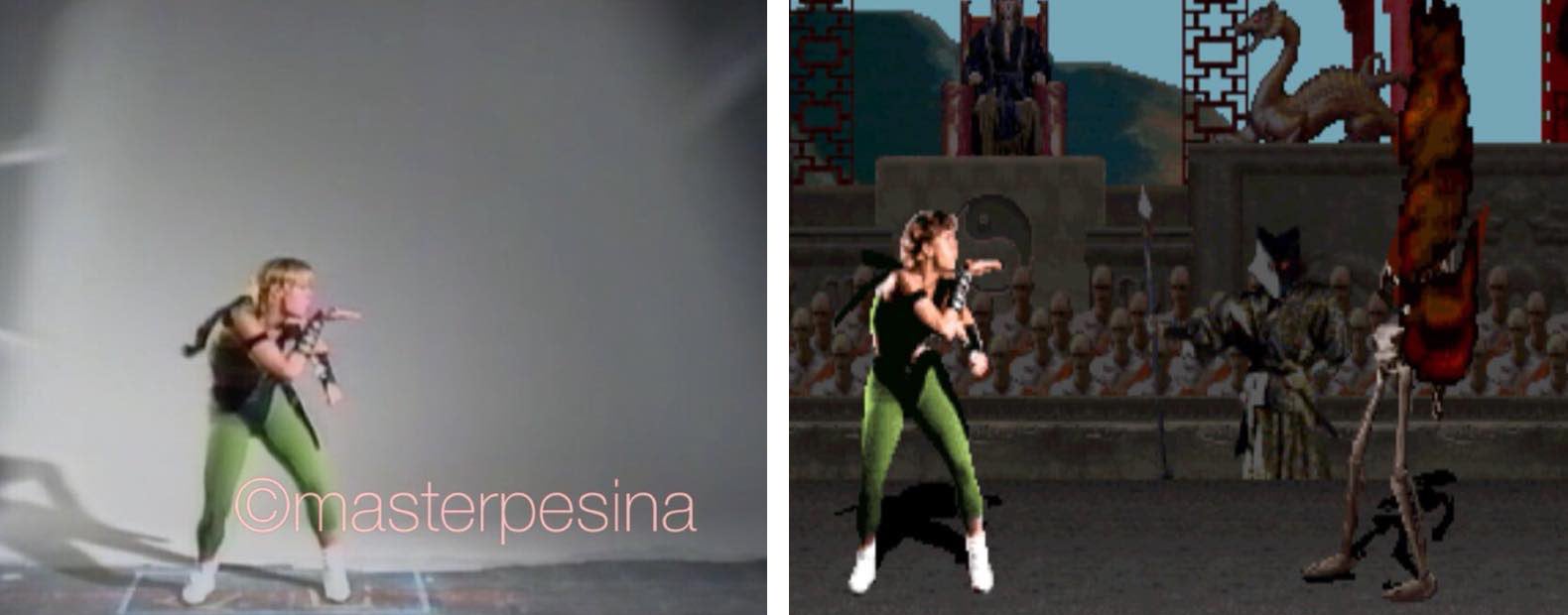
Pesina: Liu Kang was the last character we filmed, so we were rushed with his fatality. [Actor] Ho-Sung [Pak] wanted to come up with it so it’s his. Not that he has bad ideas, but I think John and I had a similar vision of the game… Basically, Ho-Sung wasn’t as geeky as John and I, so I think that’s why some people think his fatality isn’t as good as the rest.
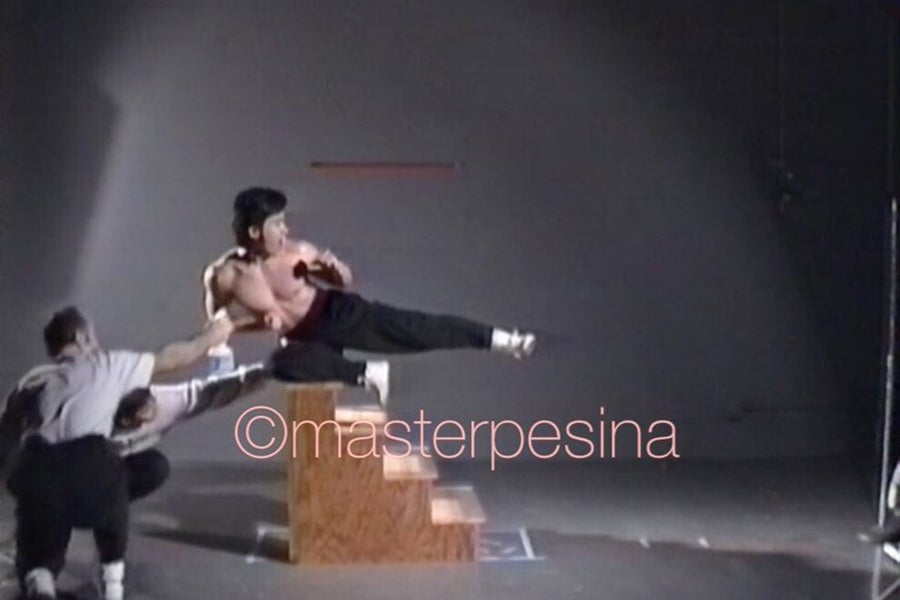
In a 2012 blog post that’s since expired, John Tobias describes the first night the game hit the Chicago arcades. He had no idea what to expect, but found the few kids in Chicago who opted to go to the arcade instead of watch the Bulls win their second championship, scrounging on the floor for more quarters. It was an early sign of what was to come: The gameplay, characters, storyline and violence shot a proverbial rope dart through the hearts of gamers and drained them of their spare change. The game exploded, and 200 arcade cabinets became many, many more.
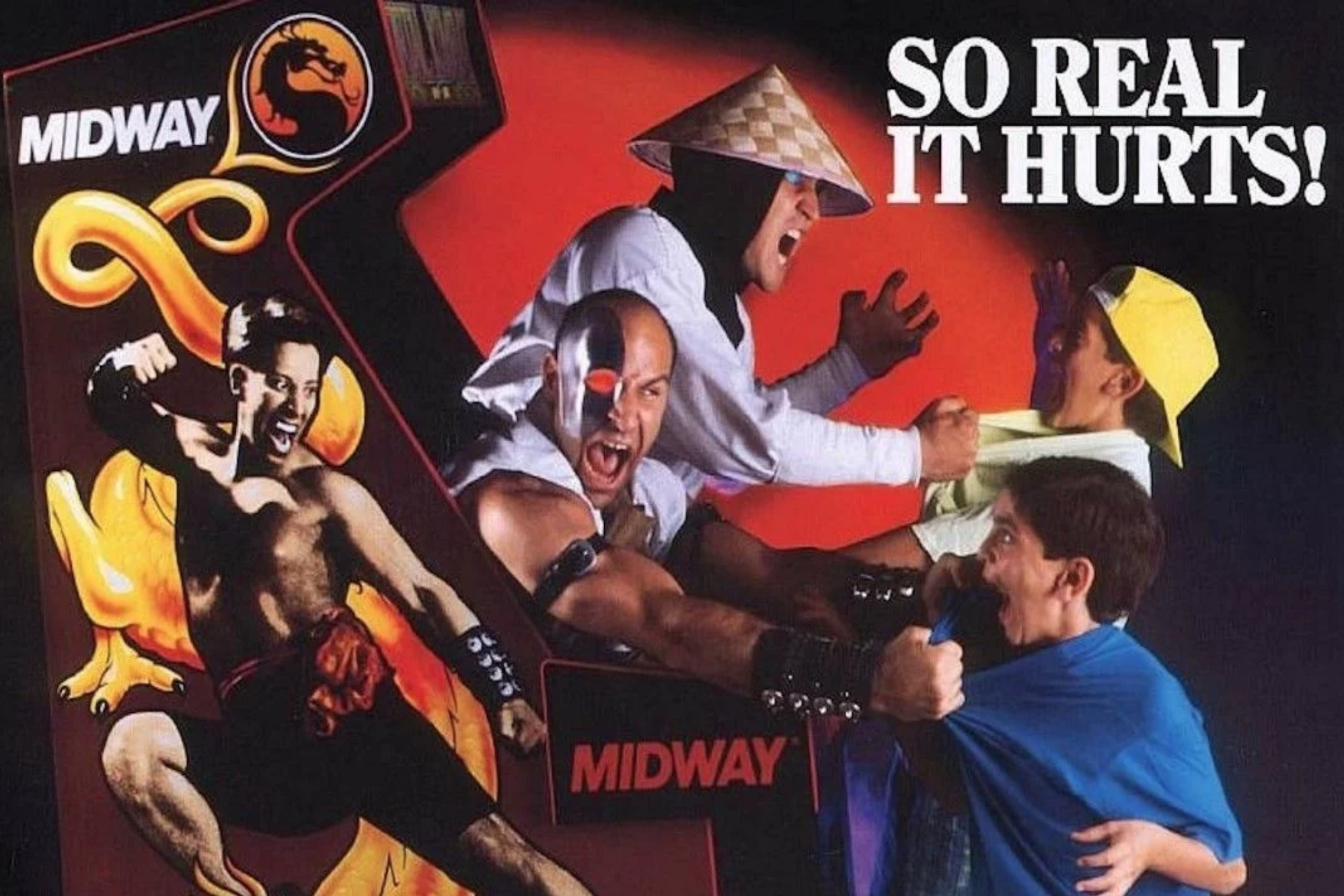
Farough: Coming out of a video game recession, Mortal Kombat the arcade version was really exciting for Midway, because they were trying to push themselves to create something that was hyper realistic for the technology, and they wanted it to be something different than Street Fighter II.
Peters: Everybody had a fighting game, such is the way with our industry. One thing works, and then there’s copycats all over the place. So Mortal Kombat started life as another Street Fighter II clone, and like all of them, it had the job of differentiating itself.
Farough: But Street Fighter II was fairly family friendly — there wasn’t blood or fatalities. Mortal Kombat comes onto the scene and everyone’s like, what… is… this? You can rip out people’s spines and disintegrate them and do all kinds of crazy stuff! It was the first real foray into ultra violence in video games.
Haseloff: If you hadn’t gone to the arcade yourself, you’d heard about Mortal Kombat. It had a reputation before it was the game everybody had played. It had invited speculation about hidden secrets by design and fans really ran with that, influencing more mystery and gimmicks in the sequels.
Alaimo: At my high school in 1992 and 1993, we had not one but two arcade cabinets, set up along with a snack bar and some tables in an unused classroom. The two arcade machines we had were Street Fighter II and Mortal Kombat. Every day, during every break, there was a crowd around the two machines. But unlike Mortal Kombat, kids could go home and practice Street Fighter II on the SNES.
Farough: Midway was starting to see the SNES and the Genesis take off and they were like, well, we want a slice of that, we can’t just keep our stuff in arcades. And that’s really how we started to see this transition from the very arcade-centric way that Midway had run its business before, to what it eventually morphed into.
Alaimo: Based on the success of Street Fighter II at home, Midway knew that they were going to have a hit at home, and chose Acclaim to publish the home versions of Mortal Kombat.
Divizio: While filming, there was no talk of making it into games for the home. In fact, they were in a rush to have us sign a new contract that had been modified, because [putting the game on home consoles] wasn’t even in the first contract.
Peters: In the 1980s and early 1990s, the concept of the arcade game being ported to console was pretty common, and it was also common that the arcade port to console was utter crap. Acclaim still wasn’t sure if Mortal Kombat was just another Street Fighter II clone, if it was just a flash in the pan or if it was going to be something big. When we were first discussing it, it had just been released and hadn’t even yet established itself as a success in the arcades.
As the game exploded into arcades across the country and the fight to censor the game began, Acclaim won publishing rights to port the game. They chose two companies considered the best suited for creating games for each console: U.K.-based Probe for the Sega Genesis version, and Utah-based Sculptured Software for the Super Nintendo version. Famously, Nintendo enforced a staunch anti-gore stance in the game, which lead to the Genesis version of the game outselling the Super Nintendo version 5-1.
Farough: Moving arcade games to home consoles was a major transition — you had to retool a lot of the ways that you interact with the game. For arcade systems, everything’s standing up, you’re using joysticks. On home console you’re using gamepads, and it’s a completely different interaction paradigm.
Peters: The thought process at Acclaim was, if this thing is now on track to be big, is there a logic to getting the most out of the Genesis and getting the most out of the Super Nintendo? At the time, Probe was considered one of the best at understanding the Sega Genesis; Sculptured Software was considered one of the best with the Super Nintendo.
Paul Carruthers, freelance contractor at Probe during Mortal Kombat: Before I was offered the contract I’d never even heard of the game, but Gary Liddon (the game’s producer at Probe) knew it was popular in the arcades and was very sure it would be a big hit on console. My job was to recreate the arcade game as closely as possible and Midway/Sega/Acclaim/Probe would only get involved when this wasn’t possible.
Peters: At Sculptured Software, working with Tobias and Boon was great. They initially had some frustrations with the limitations of the SNES — processor speed, palette limitations and audio buffers — but we all had the same goal, which was to recreate everything that was in the arcade game as faithfully as possible, getting every ounce of energy out of that little gaming console. So once all of the dust settled and everybody realized that this thing had legs and it’s most likely going to be a big deal, it was all about execution.
Carruthers: I had access to the original source code, although there were major differences between the architectures of the arcade and the Genesis, which made the process tricky. Once I’d managed to overcome this, the whole thing became easier, at least for handling the characters, fighting and weapons. These aspects pretty much fell into place by themselves. The parts of code that I couldn’t emulate in this way were a bit more difficult — parallax backgrounds, menus, control, etc. I would have to play the game and then work out a way of copying these as closely as possible. Raiden’s sparky electricity caused me so many problems, he became my favorite character.
Peters: The Super Nintendo had about one-tenth of the power of the arcade hardware Mortal Kombat was built on. We were trying to take 10 to 20 times the amount of art and squeeze it into that much smaller of a space. The hardware limitations were real and there was no way to escape them. So our first tactic was to do something no one else had done previously — convert the actual arcade game assembly code to SNES while creating and optimizing the rest by hand, based on frame-by-frame analysis of the arcade game.
We also came up with a process of “blasting” sounds directly from the cart, so that we could store more voice samples and pull them in real-time into the experience, which made the sound on the SNES version leagues better than the Genesis version.
Carruthers: I can concede that the graphics may have translated better to SNES hardware. However, I don’t think that the SNES version faithfully represents the control and responses of the original, and this is the central focus of this game. The Sega version copies the original gameplay logic in most cases line-for-line from the original source code, which I think results in a superior overall experience on the Genesis. This is what I’m most proud of.
Peters: Nintendo, in being very adamant about taking out the gore, caused some fundamental redesigns of certain features for the Super Nintendo that Probe and the Genesis frankly didn’t have to deal with. From a technical point-of-view, once you removed the violence and had to start redesigning stuff, it was no longer a port but a total redesign of several fatalities and the blood system.
Plus, getting a game approved by Nintendo was met with quality control. They were trying to move away from the, shall we say, “qualitative failures” and curate their library to avoid becoming the next Atari 2600, when there were just too many games and too much of it was just utter crap. So Nintendo had a lot more approval steps of getting a game out on their platform than Sega.
Carruthers: At Probe, the dev team was largely insulated from publishers and platform owners to keep our focus on the job. A lot of my time was spent working out the game for Genesis on my arcade cabinet at home — when I gave up on trying to unlock Reptile, the team at Midway made a cheat version of the coin-op ROM and sent it over to me so that I could see how his fighting worked and get it into the Genesis.
Peters: Nintendo’s rules of engagement seemed very blurred at first: Blood was bad. Ripping out a guy’s heart was bad. But flaming a guy into a skeleton passed the censor. So we had to creatively figure out how to push that line as much as possible. We’d draw up sketches for the animation sequences and present a couple of different options of, let’s say, Sub-Zero’s fatality. It would go to Midway and then it would go Nintendo, and if everybody thought it was good and still fit the spirit of the game, we’d do another pass of actually animating it with the characters, which still might be rejected. It was definitely an unorthodox and weird process to say the least, and I can’t remember having done something like that with any other first-party system.
Like I said, Scorpion’s fatality, where he just flames the guy and he turns into a skeleton, passed the censors because there was no blood and guts. Whereas Sub-Zero’s, we completely redid from scratch, and Kano’s ripping out the heart we changed to something where he kicked the chest and a piece of meat — or some non-defined body chunk — came out the back, and that was considered less offensive than ripping out the heart.
But eventually everybody buckled down and worked to figure out a solution that both fit Nintendo’s family-friendly focus and kept the sensibilities of Mortal Kombat, which was about playing up violence to the point of over-the-top comedy.
Haseloff: Because of Nintendo’s content policies, their version was pretty heavily neutered. Blood was replaced by globules of what manuals desperately claimed was “sweat,” and the game’s trademark fatalities became bloodless, underwhelming “finishing moves.” The music is supposed to be quite good, but if you had access to Sega, the conversation was already over. It plays smooth and faithful, with all your favorite death-moves, and multiple ways to reinstate bright red drops of blood.
Peters: We had no say in Nintendo’s stance on gore, so we did the best we could to make the best game possible within the rules and constraints we were given. Still, everyone believed the sweat and altered fatalities actually hurt sales on the SNES. If you wanted the gore, you bought the Sega version. If you wanted the better playing and looking game, you bought the SNES. As a consumer, those were your main decision points.
Alaimo: While gore in the Super Nintendo version could be restored with the Game Genie, the lack of blood has become the legacy of the Super Nintendo release of the game. Ask any gamer what the first thing that comes to their mind is when you say “Mortal Kombat on the Super Nintendo,” and the most common answer is going to be, “no blood.” The Game Boy and Game Gear releases were understandably stripped-down versions of the game, but no doubt it was pretty cool to be able to play the game on-the-go barely a year after its initial release in the arcades.
Many arcade games buried codes into their gameplay for fun little easter eggs like big heads or secret levels. Mortal Kombat followed suit, but was the first fighting game to bury a whole secret character, the infamous Reptile. They didn’t just hide him behind a simple code, though: They hid him behind a punishingly complex series of clues, so vague the team porting him to Sega couldn’t even figure it out. Beating the game wasn’t enough to prove you were a superior Mortal Kombat player: Only finding Reptile allowed you that claim.
Later, when the game’s violence was hidden behind cheat codes for home-versions, the rumors around the game’s many secrets skyrocketed. Unlike their Super Nintendo counterparts, Probe inserted a hidden sequence of buttons on the Sega Genesis that would unlock the game’s blood and guts: ABACABB, one of the most famous cheat codes in history, second only to the “Konami Code.”
Peters: At the time, it was known that if you had a rabid fanbase for your game, people would accidentally discover stuff. The more you hid, in theory, the longer tail it would have.
Pesina: During filming, Carlos and Rich wanted to have a way for you to press in a secret code that made two characters jump out and fight you during the normal play-through. I think eventually that gave Ed the idea of having a secret, unlockable character in the arcade cabinet.
Haseloff: I’ve heard the story a few different ways over the years, but consensus is that the inception of Reptile was all Ed Boon. The game was nearing completion, Boon’s working late on programming, he decides he wants to slip in a secret character. Memory’s becoming an issue, but there’s palette swapping for existing sprites, so he turns Scorpion green, comes up with the color-appropriate name Reptile, and cooks up the ultimate secret character. This character is so secret the rest of the development team doesn’t even know about it at the time! They claim it was to spark interest — I’m not sure how accurate that is, but it obviously got a lot of people talking.
Street Fighter II was a big deal at the time, and Ed’s talked about the arcade rumors and speculation that built up around it. EGM [Electronic Gaming Monthly] famously spread the legend of a secret character called Sheng Long, based on one of Ryu’s mistranslated win quotes, the same year MK was released — that’s the kind of thing Ed set out to make for real.
There are no character win quotes in MK, so a list of clues delivered by Reptile gave gamers a fighting chance of figuring it out: “Tip eht fo mottob” hinted at The Pit stage; “Look to La Luna” hinted at silhouettes passing the moon; “Perfection is the key” hinted at taking no damage, and so on. They weren’t able to do a character bio or unique moves, so that was what really helped build the mystery and legend of Reptile. That, and just being one of the first secrets of that type in such a major fighting game. Street Fighter II took a couple more years to actually get there, adding Akuma to Super Street Fighter II Turbo.
It’s such a small thing to include a green palette swap character, but I’m not sure Mortal Kombat would’ve been quite the same without it. All from a sneaky afternoon’s work by Ed Boon. Worth it, I’d say!
Farough: Game journalism back in the 1990s was super consumer-oriented, like, “These are the cool things you can do in this game, and here are the cheat codes that you can use.” I don’t know how the game journalists themselves ended up getting this information — it could be that it was provided by the developers, it could be that they had just discovered it on their own because they were button mashing. But for us kids, it was all passed down orally through our big brothers, who heard it from his friend’s brother, and you know, so on and so on and so on, who probably heard it from their dad and read it in a magazine.
Carruthers: The code that I originally put in [for the gore switch on Genesis] was DULLARD [Down, Up, Left, Left, A, Right, Down]. I was quite proud of this, but the publishers thought it was too complicated to keep putting in. And probably too silly. Very near the end of the project they asked us to come up with a code that used only the A, B and C buttons, and someone at Sega suggested ABACAB. I was happy to change it to whatever they wanted, but since my code was expecting seven letters we compromised at ABACABB. There wasn’t an awful lot of choice! [Some have theorized this was Sega giving a nod to the band Genesis’ 1991 album “Abacab.” DULLARD was kept as cheat-unlocking code at the game’s menu.]
Haseloff: I got it from a particularly helpful issue of SegaXS, and gladly passed it on to anyone who asked. I think every Mortal Kombat fan heard “ABACABB” from someone in their lives, even if they didn’t play on Sega.
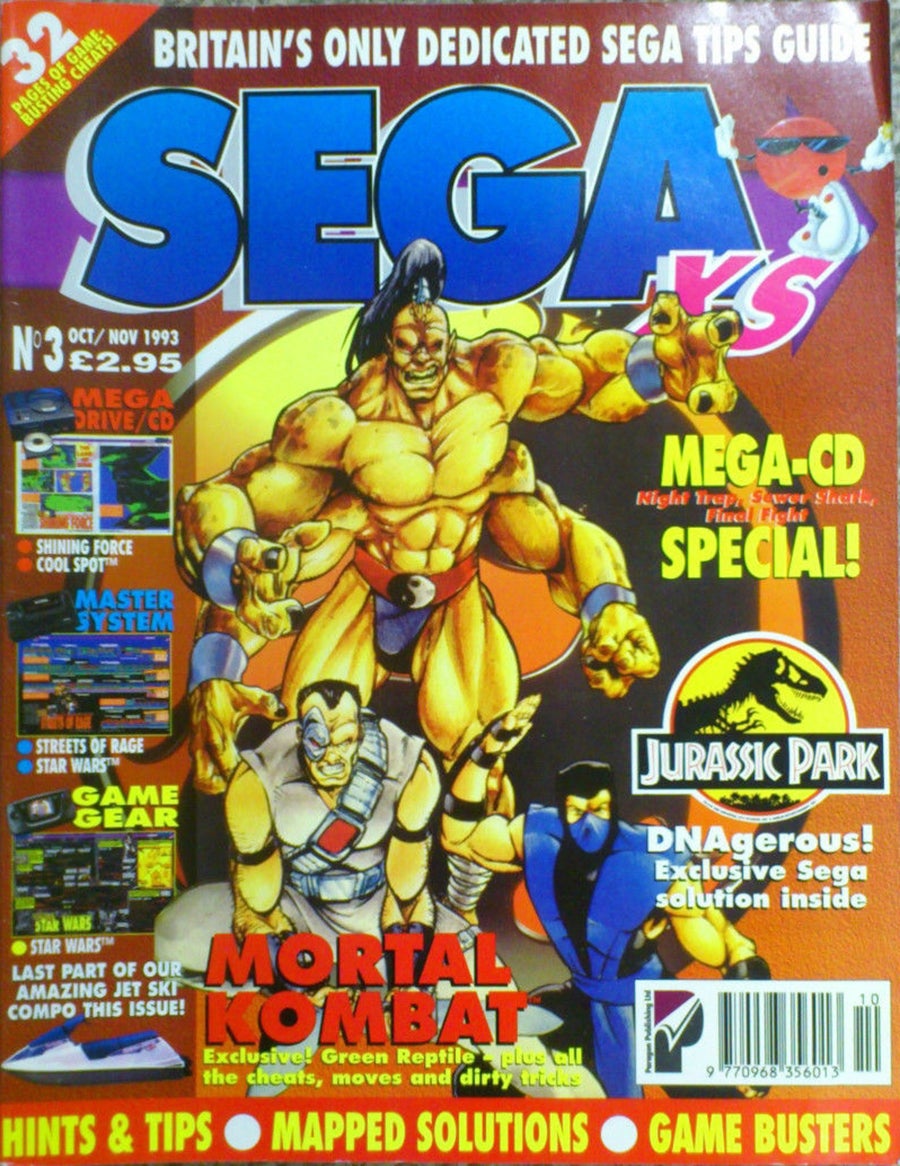
Pesina: We goofed around and filmed everything, so there’s a lot of stuff that didn’t go into the game because memory was limited. I remember goofing around with a plastic katana for Shang Tsung, I but don’t recall if we filmed it. It’s the same reason Stryker [who debuted in Mortal Kombat III] isn’t in the first game, and why we had to cut some of Sonya’s special moves, that kind of stuff.
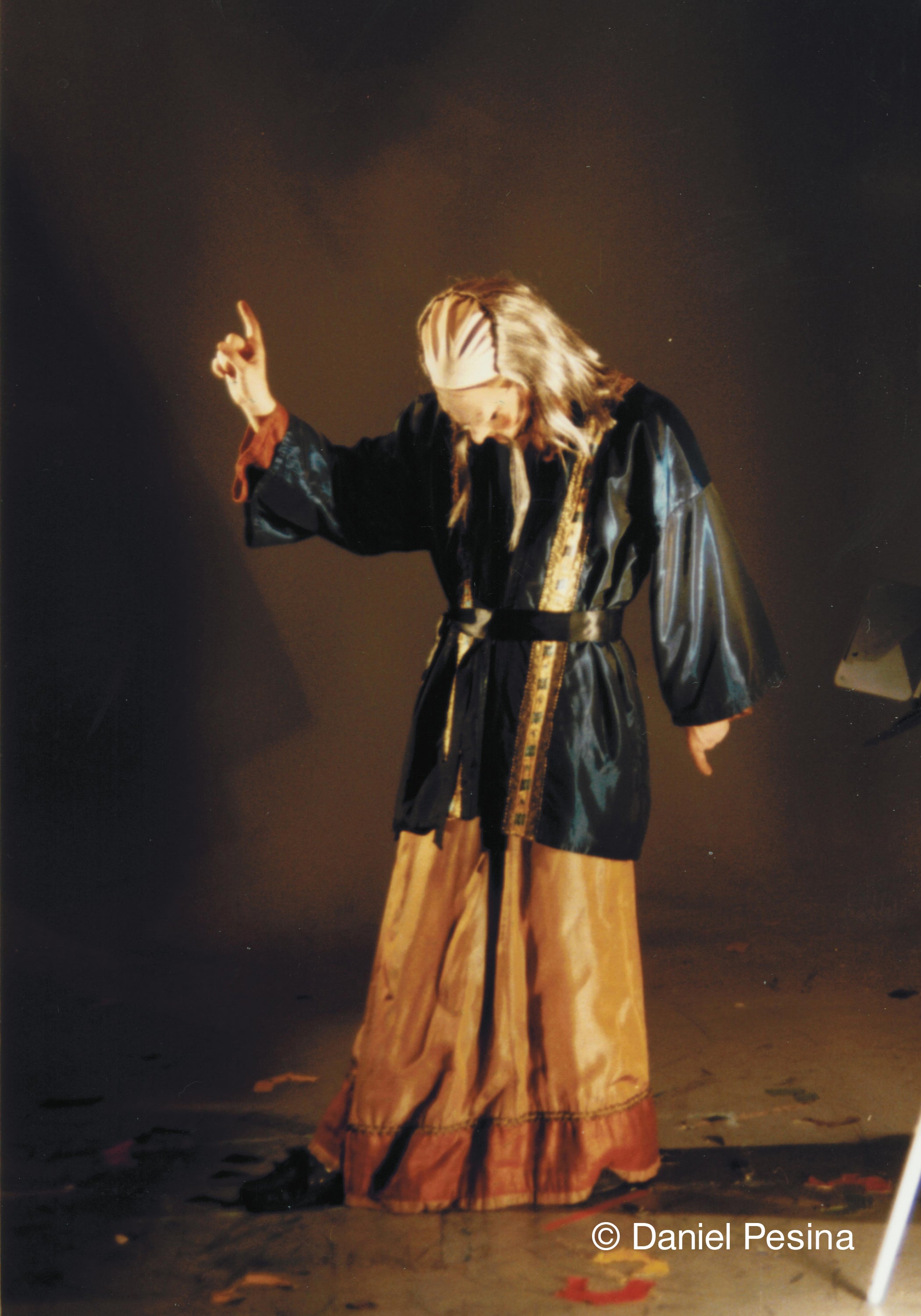
Haselhoff: There’s evidence buried in the code of Shang Tsung swinging a katana, which it is widely believed would’ve been part of a decapitation fatality. It’s not as exciting as the dark sorcery he performs during fights, but I like the kung fu simplicity of it. Bosses rarely have a fatality in Mortal Kombat. The priority is obviously giving players the power to perform death moves, but it would’ve made a lot of sense for the final boss to have one. The assumption with most of these unused pieces is that they either ran out of time at the programming stage, or just needed to conserve memory.
Peters: As a general rule, everything that was hidden and actually used in the arcade games was put into the SNES code for Mortal Kombat I, II and III. That’s why you’ll see a lot of folk who’ve disassembled the art and code for the early MK games.
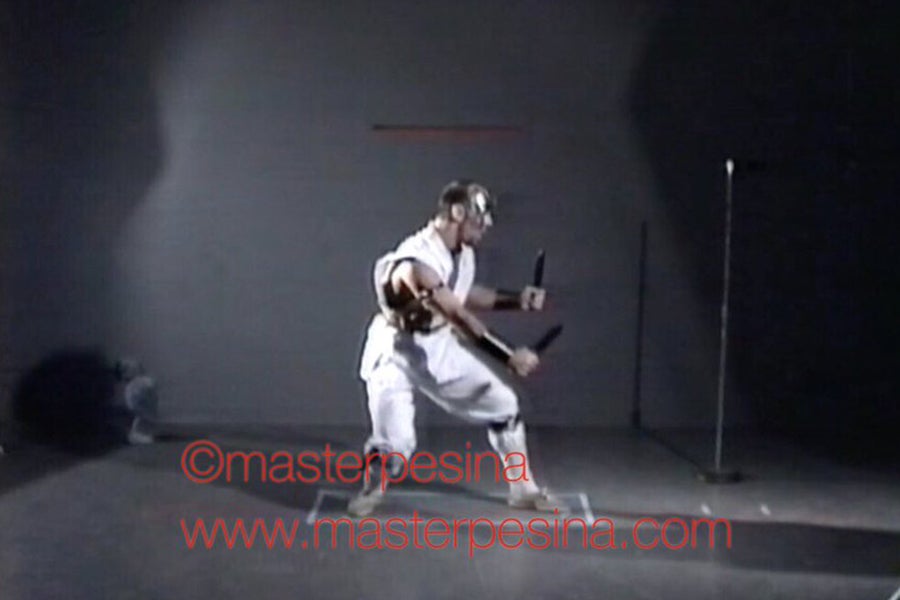
Haseloff: A couple of years ago, a guy on a YouTube channel called Your Mortal Kombat Arcade Resource found all the inputs to access the “EJB [Ed John Boon] Menu” in the first three games. It’s a diagnostic menu that lets you access character endings, edit leaderboards and things like that.
Over the years people have been digging up unused sprites that are quite interesting, too. It all gets a bit tangled up in fan lore and rumors, but John Tobias specifically confirmed the existence of unused sprites back in 2012.
“@Utkrmkp2011: @therealsaibot is really that there exist hidden sprites or unused sprites across mk1 and mkt? thank you for your time" Yes
— John Tobias (@therealsaibot) February 21, 2012
In the shadow of a multi-million dollar marketing campaign and the September 13, 1993 “Mortal Monday” launch date carved into the brains of kids across the globe, developers at Probe and Sculptured Software were under enormous pressure to get out the Super Nintendo and Sega versions.
Peters: Acclaim was essentially a marketing machine as much as it was a publisher, and Mortal Monday was the biggest game launch ever. This put development in a no-fail scenario.
Alaimo: They chose to have a unified release date for all four home versions of the game — Super Nintendo, Genesis, Game Boy, and Game Gear — and ran a huge advertising campaign, both in print and on television to hype it up.
Peters: There’s a finite number of companies that produce the certain types of ROMs and chips needed for Mortal Kombat game cartridges, and Acclaim had enlisted every single one to work on Mortal Kombat. So there was a point in time when, literally, all manufacturers in the world were making chips for the Mortal Kombat cartridges — the hype dictated they were going to sell everything they could possibly make.
Haseloff: Mortal Monday was a call to arms as much as an advertising campaign. It’s the single reason you cannot utter “Mortal Kombat” anywhere in the world without somebody shouting it at you. We expect advertising to worm its way into “viral” or “native” content these days, but “Mortal Monday” was doing it way back then. You couldn’t buy comics or magazines without seeing the ads.
Peters: Since they went all-in on the launch date, we had no choice but to be done with the code and ROMs and send it down to manufacturing three months before it would hit the street, because Acclaim literally ordered as many cartridges as could physically be made in the timeframe before the release. Obviously, this increased the pressure on everybody.
Carruthers: It was starting to become clear how big a deal it was going to be, and I started receiving phone calls at Probe from mysterious American characters who wouldn’t say who they were, but were very interested in how development was coming along. These people turned out to be Wall Street stockbrokers who were trying to work out how likely the game was to be late, as this would have a big effect on Acclaim’s share value. It was very scary to think that Acclaim’s very survival was in question if I didn’t pull my finger out and get on with it.
Peters: Acclaim, wanting to protect their huge investment, would have their producers literally fly out and live with us. They’d hover over us, the logic being if we needed an immediate decision, if we needed “help” from them in some way, there was a body there that could make that immediate call. But we wore them out, because we were working around the clock and many people were sleeping in the office and not going home for a week. Their producers couldn’t keep up with our schedule, so they had to send out enough producers to do shifts so that they wouldn’t get worn out.
Carruthers: The only scare I had was finding out about the hidden Reptile pit very late in development and having to cram it in, in double-quick time. Probe commissioned someone to do sprite compression for Mortal Kombat II in order to get all the extra characters in — it would have been nice to have that in MK I so we could have implemented better quality background graphics.
Peters: It all felt rushed, and we would have loved to have more time to validate the movements, the placements on the screen, where the characters go when they get thrown and get hit — a whole bunch of little detailed stuff that would’ve been fantastic if we’d had a couple more weeks or another month. [But] Acclaim’s gamble paid off — it was the most successful video game launch of all time up to that point and made over $50 million on its launch day alone.
Divizio: When everything was coming out, I went to the store and they had Kano on the cover with the heart-ripping thing on Time magazine, and I bought that. It was awesome.
Farough: It was incredible hype. It was the very first time I’d seen video game as hype. My brother was like, five years old and he was so excited about this game because he really wanted to play punching, kicking games with me. And he was like, look Maddy, you can play as a girl. And I’m like, well, I’m sold. I want to play as a girl. She’s cool. I like her ponytail.
The game, originally intended to exist on just 200 arcade cabinets, now had analysts expecting 3 million home copies to sell at $60 to $70 a piece. In other words, the hype around Mortal Monday worked, and the game ignited an international firestorm. Video games had yet to be given a rating system like movies and music, and Mortal Kombat became the poster child of the national debate surrounding violence in video games. Eventually the ESRB [Entertainment Software Ratings Board] was formed, but the court battles and national press only cemented Mortal Kombat into the national psyche.
Meanwhile, those who spent a Chicago summer crafting fatalities and catchphrases watched from afar. Not only did their contracts prevent them from touching any of the millions of dollars made by Midway and Acclaim, they were even shunned by parents in their communities for having been part of the game.
Divizio: In light of originally expecting this to be something that existed on 200 arcade cabinets, we were all like, “Are we gonna get something for this, more money, or that’s it?” So we were all just kind of in this constant state of waiting.
Malecki: When we were making it, we didn’t think we were really doing anything special. I’d been in countless dance performances that nobody had ever cared about. We eventually realized we weren’t going to get paid what we were promised. There was a lot of talk when we were making the game like, “Well, when this picks up, we’ll take care of you.”
Divizio: They gave us the option of three grand or a cabinet for each game. I should’ve taken the cabinet, I would’ve had an original Mortal Kombat machine.
Malecki: It’s our image. It’s us moving, and our ideas that went into it. So those of us from Mortal Kombat I decided to sue for intellectual property, but we didn’t win. [In Pesina’s case, the judge ruled “likeness or persona in a martial arts video game did not violate his common-law right of publicity.” In Malecki’s case, the judge ruled they’d consented to the videotaping, and that since it was a group effort, no individual “owned” a character’s likeness.] And that was it for Dan, Ho-Sung and me, that’s why we aren’t in the other games.
Divizio: You know what’s funny is, we’re not rich or anything. We all signed contracts when we were there called Work For Hire, so Midway and now Warner Brothers own our likeness. They did keep telling us that they’d take care of us if the game did well. Well, the game made like, friggin’ $5 billion in 1995, and they never took care of us at all.
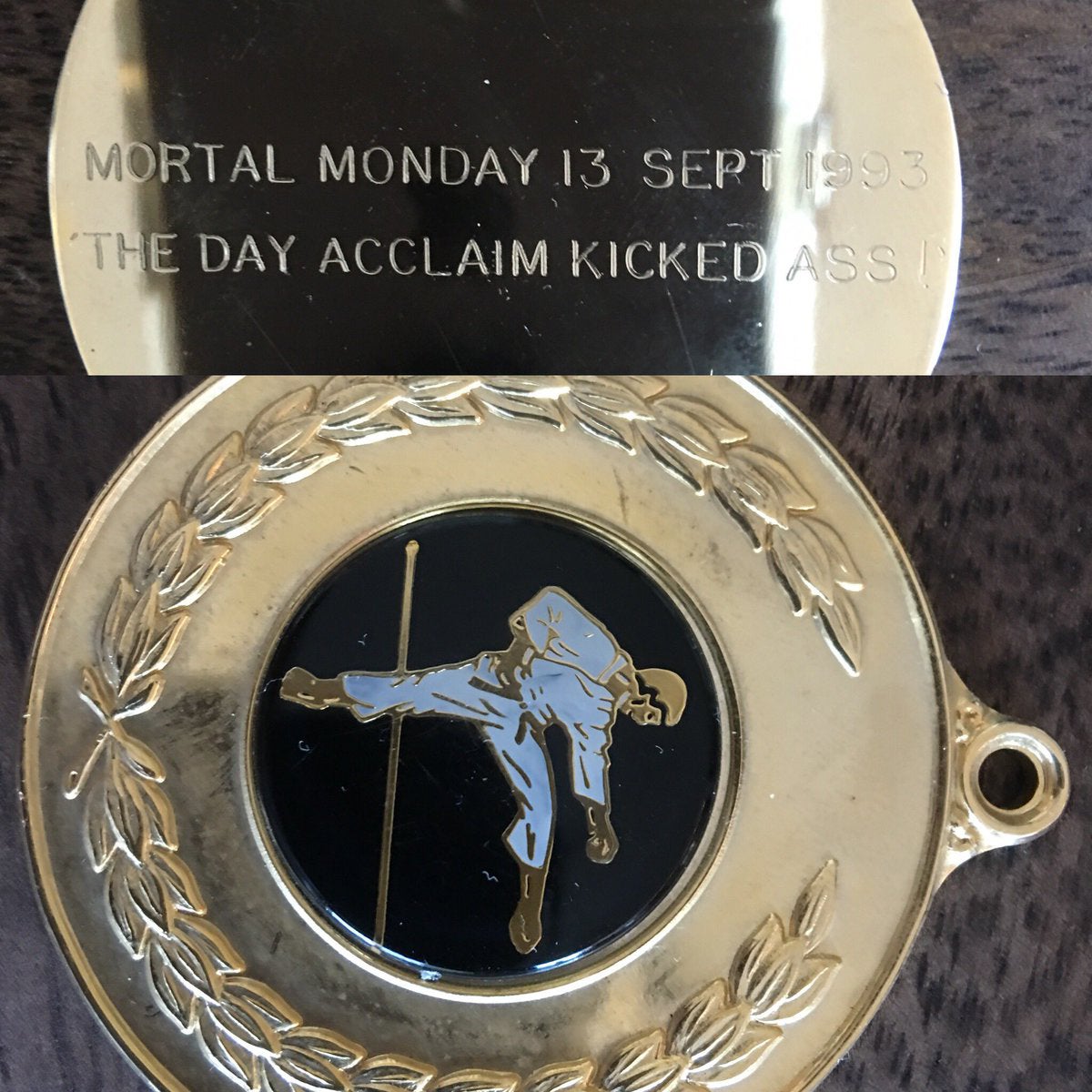
Alaimo: In the early 1990s, for a variety of reasons, graphic violence became a presence in the video game world. Advances in the technology allowed games to look more realistic, and there was a shift toward more edgy content in general in mass media. Movies became more graphic, television shows were being produced that had to air later at night, popular music was becoming more vulgar and video games were no different. As expected, parental groups took notice and were concerned about the effect that this was having on their kids.
Farough: Video games weren’t as ubiquitous as they are today, so parents didn’t know what the hell was going on. When it came out on consoles, parents were picking this game up for their kids and being like, “Holy shit, what did we just buy?” Sega had their own rating system and gave it an MA-13, but still, parents got up in arms about it. They were pissed.
Alaimo: Sega’s Night Trap and Midway’s Mortal Kombat became the poster children for violence in interactive media. Parental groups and sympathetic (or opportunistic) legislators wanted to impose regulations on video games, but the process also gave these games a ton of free advertising, and made them that much more enticing to younger gamers, because now they became forbidden fruit in many households.
Pesina: When we filmed it, it was meant for a different audience, so the level of violence was never second-guessed. It was never meant to be in the home or anything like that. Even if you look at my small contract, it just says arcade cabinet, it doesn’t say home or anything like that.
Malecki: I was trying to go make appearances in schools or park districts for kids and be a positive force for fitness, exercise and self-defense, but schools would have nothing to do with me, because they thought Mortal Kombat was so violent. We just kept thinking that everybody was missing the point: Martial arts is a good thing. It’s self-defense, it’s a sport.
Pesina: Media people would call John and Ed up, and since they worked for Midway, they’d say something like, “We can’t comment.” But then they’d be like, “Call Daniel up because he doesn’t work for Midway but helped create the game, here’s his number.” So I’d talk to them, because you know, they’re going to bitch about us, but they’re leaving their kids in front of a TV where Elmer Fudd gets shot in the face with a shotgun.
Peters: Sculptured Software is in Utah, one of the most conservative states in the country. When Mortal Kombat was released in the arcades, there was legislation trying to ban it from the state. So once the local kids found out what I was working on, they would come over and say like, “Hey, do you really worship Satan?” “Do you guys use drugs or just deal them to other people?” “Are you really homosexual because that’s the type of lifestyle that would approve that type of stuff?” So really bad, judgmental comments from neighborhood people — it was interesting to say the least
There were people in the studio that refused to work on it based on their beliefs, background, family circles, that type of thing. There was one engineer who said he’d work on it as long as we didn’t tell his family he was working on it.
Carruthers: Politicians will always jump on stuff like this for their own nefarious reasons. Certainly at the time I would have used the Tom & Jerry argument that this sort of depiction of violence was too far removed from reality to have any effect.
Farough: The hearings continued for like, two years, because the senators weren’t thrilled that there wasn’t a holistic standard for video game ratings.
Haseloff: Finally Mortal Kombat brought about the creation of the self-regulating ESRB.
Farough: Nothing has really changed since, essentially, September 1994. There are still five age-based ratings: There’s Early Childhood; Everyone; Teen; Mature; and Adults. These are all ratings that we still have today. From a gaming and industry culture perspective, I think this was a really positive thing. The ESRB being created helped us as consumers make healthy choices.
Mortal Kombat I has faded somewhat into history, overshadowed by its successor Mortal Kombat II, which boasted all the violence on both systems but with better graphics. The original game that launched the franchise — one still very much alive and kicking (and punching) — has since been swept rather deliberately under the rug. Current owners Warner Brothers have even gone so far as to squash any interest in a revival: A fan-made CG remake of the first Mortal Kombat was shut down by Warner Bros in 2014. A few months later, photos leaked which suggested the studio was remaking the game to be launched as Mortal Kombat HD. But before it was even announced, Warner Bros scrapped the project altogether without explanation.
Still, the game holds a special place in the hearts of those who made it, and those who grew up with it, despite all the trouble it caused.
Pesina: Warner Brothers and NetherRealm, they’re very tight lipped [about Mortal Kombat interviews] because they don’t want people to know [about] the creators of the franchise, and want the people who are in charge of it now to be known as the creators. Like my brother [Carlos] still works for them, so he probably won’t be able to talk.
Farough: Mortal Kombat pushed the boundaries of what people thought was possible in terms of hyper violence in video games. They pushed the envelope of what was graphically and technically possible on a console especially, which shocked the industry into making sure that it took care of itself with its content. People looked at video games and assumed they were for kids. And then Mortal Kombat comes out, and they’re like, oh shit, maybe it’s not just for kids.
Malecki: In the end, it was just a fabulous thing to be a part of. It was a great event in my life. I’m very grateful for it all, and I’m grateful to all of the fans of Mortal Kombat that realized how great it was and made it a bigger deal than even I ever thought it would be. I’m grateful that it’s loved by so many people.
Divizio: I ended up working at Home Depot in 1997 — yeah, Kano working at the Home Depot plumbing department, but that’s life. You know, in 1995, Mortal Kombat makes $5 billion and becomes part of this historic thing that changes video gaming, and you’re the guy who created “GET OVER HERE!”, your face and likeness is on all the promotions, they use everything you do, but it’s that corporate crap. I don’t think they actually knew that the people who were down in that room being filmed were creative, or even friends with John.
Chiarelli: Truth be told, I’m rather surprised that Mortal Kombat has had the longevity it’s enjoyed. Mortal Kombat started out as a copycat of Street Fighter, but it took its aesthetics and playability to a whole new, different level — its success cannot be fully explained by these factors alone. I believe it will remain a timeless classic, fondly remembered by millions and influencing pop culture for decades to come.
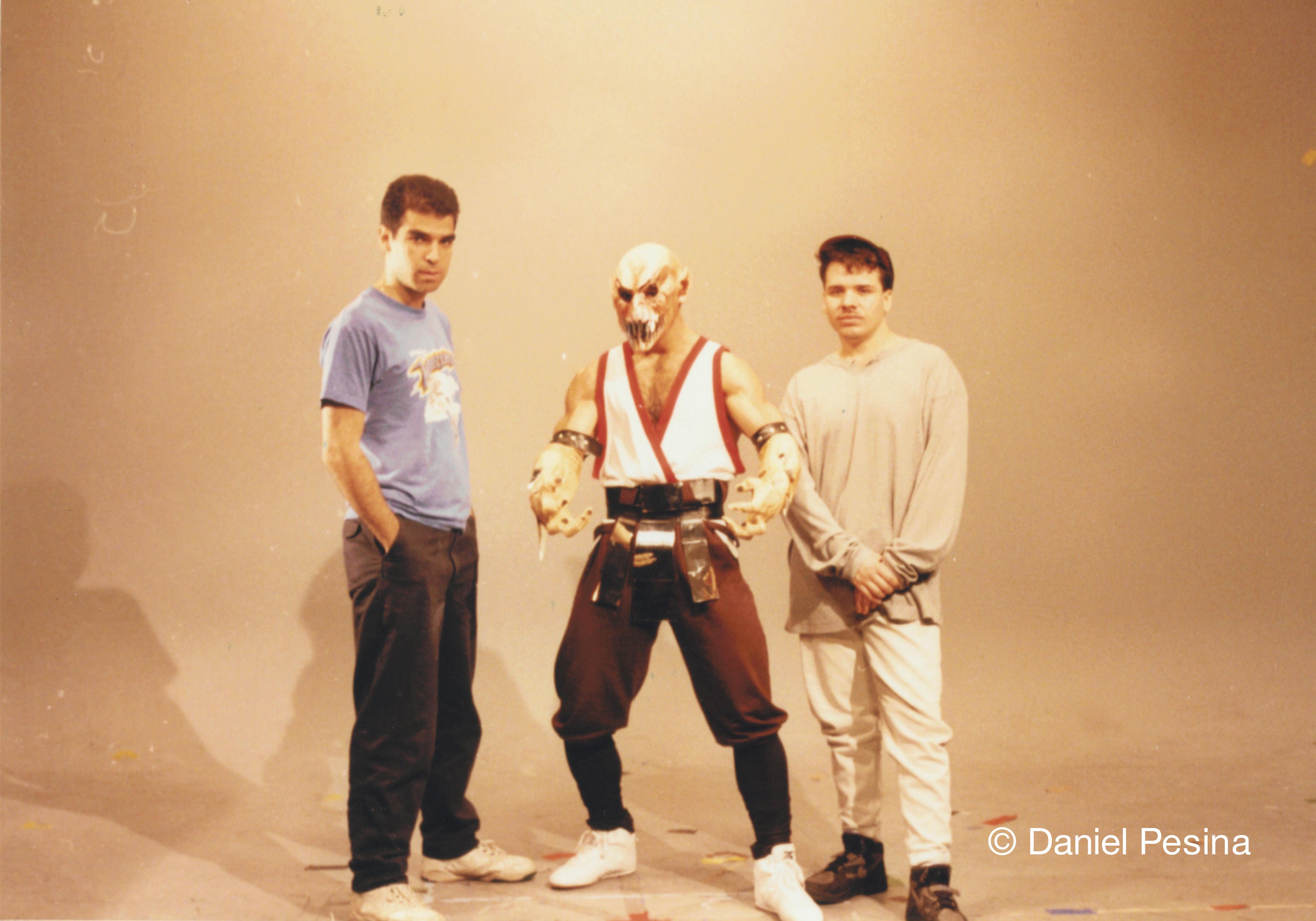
Haseloff: The first Mortal Kombat established so much that has never gone away. So many of the characters and beats people know are there from the very start! It was destined to be supplanted by later refinements, but that’s the legacy. Mortal Kombat II cast a shadow over the entire series very quickly and has been the retro reference most thought of, and revisited. It’s possible an HD remake is still viewed as an ongoing concern. Ed Boon has mentioned he’ll talk about it one day, but it’s obviously too soon for details, regardless of reason.
But I miss some of that kung fu genre in the current games, and I’d love to see it revisited more intently in a new tournament plot. The original version was partially retold in the reboot of Mortal Kombat (2011), but we’ve still never actually gotten to the next tournament.
It’s time.

